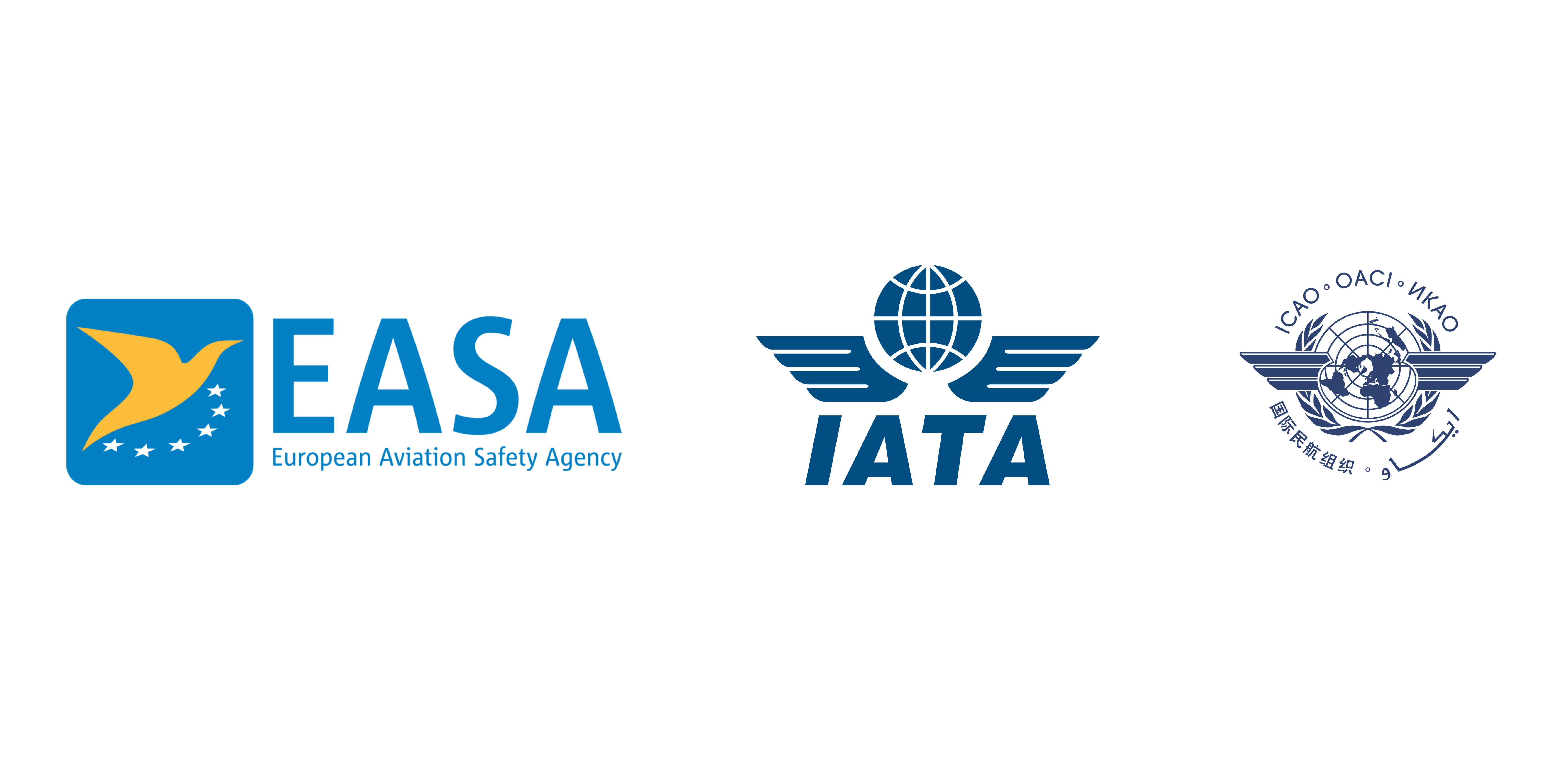Introduction
Training in the aviation industry is a complex and highly regulated process where control, safety, and compliance are critical. Between evolving international standards, regulatory requirements, and the diverse roles across airlines and training organizations, ensuring consistency and effectiveness in training can be a real challenge. That’s why more and more aviation operators and training centers are turning to technology to simplify and optimize their training processes.
An Aviation Training Management System (ATMS) is a comprehensive software solution designed to help streamline every aspect of aviation training. From planning and scheduling to designing programs, grading trainees, managing certifications, and generating analytics, an ATMS brings together all the tools needed to effectively manage training operations. It supports instructors and training managers by automating routine tasks, improving debriefing workflows, and ensuring that training programs remain compliant and up to date.
In this article, we’ll explore the key benefits of adopting an Aviation Training Management System. You’ll discover how this powerful platform can improve training efficiency, ensure regulatory compliance, enhance safety, support a wide range of aviation roles, and even reduce costs while boosting return on investment. Whether you’re an airline, an ATO, or a business aviation operator, the advantages of a smart TMS are clear.
👉 Discover what is an Aviation Training Management System.
Understanding an Aviation Training Management System
To understand what an Aviation Training Management System (TMS) is, we first need to consider why it’s essential—especially in a highly regulated, safety-critical industry like aviation. From pilots and cabin crew to maintenance teams and ground staff, aviation professionals must engage in continuous and compliant training. Managing these diverse and complex requirements demands a robust solution: this is where an Aviation TMS becomes indispensable.
An Aviation TMS is an integrated, all-in-one platform designed specifically to manage, streamline, and optimize aviation training operations. Unlike a standard Learning Management System (LMS), which focuses mainly on delivering e-learning content, a TMS encompasses the full training lifecycle. It typically includes modules for training scheduling, trainee tracking, compliance management, e-learning integration, performance analytics, and detailed reporting. While an LMS can be embedded within a TMS, the TMS offers a broader and more operationally aligned framework.
By connecting every function in one place, a TMS enables training teams to automate workflows, maintain regulatory compliance, and track competency development in real time. It also aggregates valuable data, helping organizations make informed decisions about training effectiveness and resource planning.
Aviation TMS platforms are used by airlines, aviation training organizations (ATOs), flight academies, and maintenance training centers. These users benefit from a centralized system that ensures consistency, efficiency, and transparency across training programs—no matter the complexity or scale.
Ultimately, an Aviation Training Management System is not just a tool, it’s a strategic asset that supports safety, performance, and operational excellence across the aviation industry.
Improved Training Efficiency with an Aviation Training Management System
An Aviation Training Management System (TMS) plays a key role in improving training efficiency for airlines and aviation training organizations. By streamlining scheduling and automating repetitive tasks, it significantly reduces the administrative workload and improves overall productivity.
Scheduling is one of the most time-consuming elements of aviation training. A TMS simplifies this process by automatically coordinating instructors, trainees, and available resources. It ensures that scheduling conflicts are avoided and that all sessions comply with regulatory requirements. This not only saves time but also improves the consistency and quality of training delivery.
Automated processes for training assignment and progression tracking ensure that every trainee follows the appropriate training path. The system assigns training modules based on roles, qualifications, and timelines—eliminating the risk of missed deadlines or duplicate training. Progress is tracked in real time, and alerts notify training managers of upcoming expirations or gaps in completion.
Real-time updates on trainee performance and instructor feedback create a transparent and responsive training environment. Instructors can enter evaluations directly into the system during or after sessions, allowing immediate visibility for training managers. This enables timely interventions and data-driven decisions to support trainee development.
Another major benefit is the reduction in paperwork and manual tasks. With digital records, forms, and grading tools integrated into one platform, there’s no need to handle paper files or manually compile reports. This shift not only reduces errors but also frees up valuable time for training teams to focus on improving training outcomes.
A TMS brings clarity, speed, and control to aviation training operations.
👉 Learn more about our Aviation Training Management System.

Ensured Regulatory Compliance with an ATMS
In today’s aviation industry, ensuring compliance with regulatory bodies such as the FAA, EASA, and IATA is not optional, it’s essential. Non-compliance can lead to operational delays, penalties, and reputational damage. This is where an Aviation Training Management System (TMS) becomes indispensable.
A robust Aviation TMS automates and streamlines the compliance process by providing real-time tracking of all training and certification requirements. Automatic notifications alert administrators and crew members when training deadlines are approaching or when licenses and certifications are nearing expiration. This proactive approach helps ensure that no crew member operates with outdated qualifications, significantly reducing the risk of compliance breaches.
Another critical benefit of a TMS is centralized and secure documentation. All training records, certificates, and qualification histories are stored digitally in one place. This simplifies the preparation for audits and makes it easy to demonstrate compliance with aviation standards. The system also creates a full audit trail, enhancing transparency and accountability throughout the organization.
Moreover, the ability to quickly generate compliance reports and provide evidence of regulatory adherence during inspections adds a vital layer of security. Organizations no longer need to rely on manual tracking methods or disparate systems that increase the risk of error.
Ultimately, a well-integrated Aviation TMS helps training organizations and airlines maintain uninterrupted operations, stay aligned with global regulatory standards, and build a strong safety culture. With ever-evolving regulations, a TMS ensures you stay ahead, keeping compliance a seamless, automated part of your operations.
👉 Know more about regulatory compliance in aviation training. ✈️

Enhanced Aviation Safety
Aviation safety hinges on consistent, high-quality training. Structured training systems play a decisive role in elevating safety standards by ensuring uniformity across all instructional and assessment activities. These systems eliminate variability in instructor interpretation and guarantee that every trainee receives the same rigorously designed learning experience. As a result, airlines and training organizations can maintain high standards while reducing human error.
The consistency in training delivery and evaluation allows for objective benchmarking of skills across the entire organization. This uniformity is essential to ensure that all crew members, regardless of location or background, meet the same operational and safety expectations. Moreover, when assessments are standardized, deviations in trainee performance become easier to detect, reducing the risk of undetected competency gaps.
Modern training systems also leverage data analytics to go beyond retrospective evaluation. With real-time performance tracking and historical data aggregation, training managers can rapidly identify skill gaps and take corrective action before issues manifest in operational settings. This predictive capability transforms training from a reactive to a proactive safety mechanism.
Advanced analytics support continuous safety improvement by correlating training outcomes with real-world performance indicators. These insights help organizations adjust curricula and training focus in anticipation of emerging risks. Structured systems backed by analytics thus form a feedback loop that constantly reinforces safety.
For organizations seeking to align with ICAO and EASA safety priorities, implementing data-driven, structured training systems is no longer optional, it is a critical step toward operational excellence and long-term risk mitigation.
Better Management of Diverse Aviation Jobs
Aviation training demands precision, adaptability, and alignment with diverse operational roles. A robust Training Management System (TMS) meets these needs by centralizing and customizing training across pilots, cabin crew, ground operations, and maintenance personnel.
Each role in aviation comes with specific regulatory, operational, and safety requirements. A TMS enables organizations to design and manage distinct training pathways that reflect these differences. Pilots may require recurrent simulator sessions and complex scenario evaluations, while cabin crew need modules on safety procedures, service protocols, and crisis response. Ground operations staff benefit from targeted training in logistics, ramp safety, and regulatory compliance. Maintenance personnel require up-to-date technical certifications and hands-on assessments. A centralized TMS ensures each track remains compliant, updated, and aligned with operational reality.
The modular structure of a modern TMS offers the flexibility to adapt programs over time. Organizations can easily add, remove, or update content according to evolving regulations or internal policies. This modularity also supports scalability, essential for airlines and training centers managing multiple staff categories simultaneously.
Tailored training improves employee engagement by aligning learning content with daily responsibilities. Trainees gain clarity, relevance, and motivation when training reflects their operational environment. This direct impact on performance and satisfaction contributes to reduced turnover and stronger retention. The system’s data analytics can also identify training gaps early, allowing timely intervention and continuous improvement.
Aviation organizations adopting a role-specific TMS gain operational efficiency, regulatory alignment, and a more motivated workforce, critical assets in a high-stakes industry.

Cost Reduction and ROI in Aviation Training Management Systems
An Aviation Training Management System (TMS) directly impacts the bottom line by reducing costs through automation and streamlined operations. Traditional training programs rely heavily on manual planning, fragmented tools, and paper-based workflows. Replacing these with a centralized digital platform immediately eliminates redundancies and cuts administrative overhead.
Automation enables intelligent scheduling, auto-assignment of instructors, and digital grading. These functions reduce the time spent on repetitive tasks and free up personnel for higher-value activities. As a result, organizations experience measurable efficiency gains and a lower cost per training hour.
Training time is significantly reduced. Optimized resource usage—such as simulator availability, instructor load balancing, and trainee grouping—means faster progression through programs. This directly lowers the cost of training per crew member and accelerates operational readiness.
Digitalization replaces physical paperwork, manual tracking, and scattered communication with integrated, real-time data access. This not only reduces administrative labor but also improves the accuracy of compliance documentation. The risk of delays due to missing records or last-minute audit issues drops sharply.
These efficiencies compound into a strong return on investment. Organizations see higher throughput with the same or fewer resources, while avoiding costly disruptions tied to regulatory non-compliance. Over time, the TMS becomes a driver of operational stability, supporting consistent training delivery at scale.
The ROI is not abstract, it’s visible in reduced hours, fewer errors, and smoother audit cycles. For aviation organizations facing tight margins and regulatory pressure, a TMS offers a direct, quantifiable financial advantage.

Conclusion
In a highly regulated and performance-critical industry like aviation, adopting a Training Management System (TMS) is no longer a competitive advantage—it’s a strategic necessity. By integrating scheduling, compliance tracking, role-specific pathways, and performance analytics, a TMS transforms training into a streamlined, data-driven process. It reduces costs, eliminates administrative burden, and supports proactive safety management. More importantly, it ensures that all training activities—from pilot simulator sessions to ground staff certification—are aligned, auditable, and consistently executed. As the industry faces rising complexity, a centralized and modular TMS equips organizations to scale operations, adapt to new regulations, and improve trainee outcomes with precision.




